- Home
- William Shakespeare
As You Like It Page 2
As You Like It Read online
Page 2
ALIENA AND GANYMEDE
Crucially, this play belongs to the girls, who come to Arden because it is a place where they can try on new identities. Celia disguises herself as “Aliena,” suggesting the idea of the immigrant, the resident “alien” who always feels like an outsider. And Rosalind switches gender to become “Ganymede.” Shakespeare’s original audience would have been acutely aware of the connotations of this assumed name. The original Ganymede was a young male abducted by Jove in classical mythology. In Shakespeare’s time, the figure was synonymous with pederastic desire, as explained in a dictionary of the period: “Ganymede: the name of a Trojan boy, whom Jupiter so loved (say the poets) as he took him up to Heaven, and made him his Cup-bearer. Hence any boy that is loved for carnal abuse, or is hired to be used contrary to nature to commit the detestable sin of sodomy, is called a Ganymede; an Ingle.” The same dictionary’s definition of “ingle” is “a youth kept or accompanied for sodomy.” The forest is the supremely natural place. By locating the playful wooing of Orlando and “Ganymede” in this setting, Shakespeare asks his audience to imagine the possibility that same-sex desire may not, after all, be “contrary to nature.”
The place of “banishment” turns out to be the home of “liberty”—free from the constraints of court hierarchy and customary deference, Arden is where you can play at being someone different and find out who you really are. It’s where you learn to live alongside people who come from very different backgrounds from your own. And where, in the end, you all come together for a big party in celebration of multiple mixed marriages that cut across the traditional social order.
As You Like It is Shakespeare’s most elegant play. At its climax Rosalind calls the cast into a circle, the figure of perfection, and resolves the plot with the assistance of Hymen, god of marriage. Whereas most of the other comedies are shadowed by death, this one offers four weddings and no funeral. The part of Rosalind is the longest and most joyous female role in the complete works. It would have been extraordinarily demanding for the boy actor who first performed it, though made a little easier by the fact that Rosalind spends so much of the time dressed as a boy.
Shakespeare moves quickly from the multiple marriages to the closing dance. He introduces the magical “conversion” of bad Frederick in place of the battle between the forces of good and evil that occurs at the end of Lodge’s story, and he focuses on the realization of erotic desire rather than the questions of social advancement that preoccupied Lodge. The play omits the apportioning of rewards with which Rosalynd ended. In the novel, the figure who corresponds to Silvius becomes “lord over all the forest of Arden,” Corin is made master of the Celia-figure’s flock, and loyal retainer Adam improbably becomes captain of the king’s guard.
There is a curious stage direction when the women first arrive in Arden: “Enter Rosalind for Ganymede, Celia for Aliena, and Clown alias Touchstone” (Act 2 Scene 4). Does alias mean that Touchstone has also taken on a disguised identity? It has been suggested that he would have begun the play in the long plain coat of the “natural” (simpleton), then exchanged this for the “motley” of the professional fool when he escapes from the court with the women. But there is no sense of his verbal style changing or of disguise being a means of self-discovery, as it is so profoundly for Rosalind when she plays the role of Ganymede; Touchstone appears always to have been a touchstone, a master of retort that reveals other people’s foolishness. The question of Touchstone being recognized as the court fool, and thus blowing the disguise of Rosalind and Celia, is avoided by the device of keeping all three of them apart from the duke and his courtiers until the final scene. That is why Jaques cannot be a courtier: he must encounter Touchstone as a stranger and delight in him as a fellow outsider, albeit with a different linguistic style and a different end to his irony. Jaques offers “invective” and formal discourses (most famously his anatomy of the “seven ages” of human life) to Touchstone’s one-line quips and riffs of extended word-mongering (most dazzlingly his explication of the seven stages of a quarrel).
Wherever the word “natural” is found in the play, whether associated with Touchstone, Corin, or the forest itself, it is possible to see happiness and a kind of innocence; the voice of Jaques is that of “experience” bringing world-weary melancholy. Rosalind has no doubt which she prefers, observing to Jaques that “your experience makes you sad: I had rather have a fool to make me merry than experience to make me sad.”
As in Lodge’s Rosalynd, the plot of the play sometimes seems little more than a pretext for the setting up of debates and meditations. The heart of the play is to be found in the set-piece dialogues. Before their departure from court, Rosalind and Celia debate the relative importance of “nature” and “fortune”; in Arden, there are dialogues between the melancholy man and the fool, the cynic and the lover, the court fool and the “natural” shepherd (who wins the debate by virtue of his recognition that social customs vary from place to place). With brilliant counterpoint, a prose wooing scene is played against a verse one. Reversing dramatic convention, it is the courtly characters who speak prose and the shepherds who court in verse.
Above all, there is the encounter between Orlando and Rosalind-as-Ganymede-as-Rosalind. With the added layer of the boy actor for whom Shakespeare was writing—of which we are reminded by means of a joke in the epilogue—here a boy plays a girl playing a boy playing a girl. Whereas in the shepherd plot it is Phoebe who has romantic notions about love that make her natural partner Silvius a disappointment to her, in the main plot disguise enables the woman to offer the man down-to-earth “counsel” as preparation for marriage. Through the illusions of cross-dressing and role-play, Rosalind exposes the illusions of romantic desire: “The patterns of love” (Troilus, Leander) are not to be imitated, since the old stories about them are “all lies.” “[M]en have died from time to time and worms have eaten them, but not for love.” So much for men.
As for women, the key to keeping them is not to restrain them. Rosalind-Ganymede’s lesson is the opposite of that of The Taming of the Shrew: a desirable woman is not a tame one but a “wayward” one, whose energies (verbal, emotional, and sexual) are incorrigible. “Make the doors upon a woman’s wit and it will out at the casement. Shut that and ’twill out at the key-hole. Stop that, ’twill fly with the smoke out at the chimney.” In her poise and her playfulness, her knowledge of what makes people tick and her capacity for strong feeling, whether joyful, fearful, or simply amazed (“O coz, coz, coz, my pretty little coz, that thou didst know how many fathom deep I am in love! But it cannot be sounded”), Rosalind is Shakespeare’s most complete woman.
* “The Argument of Comedy” originally appeared in English Institute Essays 1948, ed. D. A. Robertson (1949), and has often been reprinted in critical anthologies. Frye himself adapted it for inclusion in his classic study, Anatomy of Criticism (1957).
ABOUT THE TEXT
Shakespeare endures through history. He illuminates later times as well as his own. He helps us to understand the human condition. But he cannot do this without a good text of the plays. Without editions there would be no Shakespeare. That is why every twenty years or so throughout the last three centuries there has been a major new edition of his complete works. One aspect of editing is the process of keeping the texts up to date—modernizing the spelling, punctuation, and typography (though not, of course, the actual words), providing explanatory notes in the light of changing educational practices (a generation ago, most of Shakespeare’s classical and biblical allusions could be assumed to be generally understood, but now they can’t).
Because Shakespeare did not personally oversee the publication of his works, with some plays there are major editorial difficulties. Decisions have to be made as to the relative authority of the early printed editions, the pocket format “quartos” published in Shakespeare’s lifetime, and the elaborately produced “First Folio” text of 1623, the original “Complete Works” prepared for the press after his death
by Shakespeare’s fellow actors, the people who knew the plays better than anyone else. As You Like It, however, exists only in a Folio text that is reasonably well printed, so there is little textual debate about this play.
The following notes highlight various aspects of the editorial process and indicate conventions used in the text of this edition:
Lists of Parts are given in the First Folio for only six plays, not including As You Like It, so the list here is editorially supplied. Capitals indicate that part of the name used for speech headings in the script (thus “DUKE SENIOR, in exile”).
Locations are provided by the Folio for only two plays, of which As You Like It is not one. Eighteenth-century editors, working in an age of elaborately realistic stage sets, were the first to provide detailed locations (“another part of the forest”). Given that Shakespeare wrote for a bare stage and often an imprecise sense of place, we have relegated locations to the explanatory notes, where they are given at the beginning of each scene where the imaginary location is different from the one before. In the case of As You Like It, after the first act, almost all the action is set in the Forest of Arden.
Act and Scene Divisions were provided in the Folio in a much more thoroughgoing way than in the Quartos. Sometimes, however, they were erroneous or omitted; corrections and additions supplied by editorial tradition are indicated by square brackets. Five-act division is based on a classical model, and act breaks provided the opportunity to replace the candles in the indoor Blackfriars playhouse which the King’s Men used after 1608, but Shakespeare did not necessarily think in terms of a five-part structure of dramatic composition. The Folio convention is that a scene ends when the stage is empty. Nowadays, partly under the influence of film, we tend to consider a scene to be a dramatic unit that ends with either a change of imaginary location or a significant passage of time within the narrative. Shakespeare’s fluidity of composition accords well with this convention, so in addition to act and scene numbers we provide a running scene count in the right margin at the beginning of each new scene, in the typeface used for editorial directions. Where there is a scene break caused by a momentary bare stage, but the location does not change and extra time does not pass, we use the convention running scene continues. There is inevitably a degree of editorial judgment in making such calls, but the system is very valuable in suggesting the pace of the plays.
Speakers’ Names are often inconsistent in Folio. We have regularized speech headings but retained an element of deliberate inconsistency in entry directions, in order to give the flavor of Folio. Thus TOUCHSTONE is always so-called in his speech headings but “Clown” in entry directions.
Verse is indicated by lines that do not run to the right margin and by capitalization of each line. The Folio printers sometimes set verse as prose, and vice versa (either out of misunderstanding or for reasons of space). We have silently corrected in such cases, although in some instances there is ambiguity, in which case we have leaned toward the preservation of Folio layout. Folio sometimes uses contraction (“turnd” rather than “turned”) to indicate whether or not the final “-ed” of a past participle is sounded, an area where there is variation for the sake of the five-beat iambic pentameter rhythm. We use the convention of a grave accent to indicate sounding (thus “turnèd” would be two syllables) but would urge actors not to overstress. In cases where one speaker ends with a verse half-line and the next begins with the other half of the pentameter, editors since the late eighteenth century have indented the second line. We have abandoned this convention, since the Folio does not use it, nor did actors’ cues in the Shakespearean theater. An exception is made when the second speaker actively interrupts or completes the first speaker’s sentence.
Spelling is modernized, but older forms are very occasionally maintained where necessary for rhythm or aural effect.
Punctuation in Shakespeare’s time was as much rhetorical as grammatical. “Colon” was originally a term for a unit of thought in an argument. The semicolon was a new unit of punctuation (some of the Quartos lack them altogether). We have modernized punctuation throughout but have given more weight to Folio punctuation than many editors, since, though not Shakespearean, it reflects the usage of his period. In particular, we have used the colon far more than many editors: it is exceptionally useful as a way of indicating how many Shakespearean speeches unfold clause by clause in a developing argument that gives the illusion of enacting the process of thinking in the moment. We have also kept in mind the origin of punctuation in classical times as a way of assisting the actor and orator: the comma suggests the briefest of pauses for breath, the colon a middling one, and a full stop or period a longer pause. Semicolons, by contrast, belong to an era of punctuation that was only just coming in during Shakespeare’s time and that is coming to an end now: we have accordingly used them only where they occur in our copy texts (and not always then). Dashes are sometimes used for parenthetical interjections where the Folio has brackets. They are also used for interruptions and changes in train of thought. Where a change of addressee occurs within a speech, we have used a dash preceded by a period (or occasionally another form of punctuation). Often the identity of the respective addressees is obvious from the context. When it is not, this has been indicated in a marginal stage direction.
Entrances and Exits are fairly thorough in Folio, which has accordingly been followed as faithfully as possible. Where characters are omitted or corrections are necessary, this is indicated by square brackets (e.g. “[and Attendants]”). Exit is sometimes silently normalized to Exeunt and Manet anglicized to “remains.” We trust Folio positioning of entrances and exits to a greater degree than most editors.
Editorial Stage Directions such as stage business, asides, indications of addressee and of characters’ position on the gallery stage are used only sparingly in Folio. Other editions mingle directions like this with original Folio and Quarto directions, sometimes marking them by means of square brackets. We have sought to distinguish what could be described as directorial interventions of this kind from Folio-style directions (either original or supplied) by placing them in the right margin in a smaller typeface. There is a degree of subjectivity about which directions are of which kind, but the procedure is intended as a reminder to the reader and the actor that Shakespearean stage directions are often dependent upon editorial inference alone and are not set in stone. We also depart from editorial tradition in sometimes admitting uncertainty and thus printing permissive stage directions, such as an Aside? (often a line may be equally effective as an aside or a direct address—it is for each production or reading to make its own decision) or a may exit or a piece of business placed between arrows to indicate that it may occur at various different moments within a scene.
Line Numbers are editorial, for reference and to key the explanatory and textual notes.
Explanatory Notes explain allusions and gloss obsolete and difficult words, confusing phraseology, occasional major textual cruces, and so on. Particular attention is given to non-standard usage, bawdy innuendo, and technical terms (e.g. legal and military language). Where more than one sense is given, commas indicate shades of related meaning, slashes alternative or double meanings.
Textual Notes at the end of the play indicate major departures from the Folio. They take the following form: the reading of our text is given in bold and its source given after an equals sign, with “F2” indicating a correction that derives from the Second Folio of 1632, “F3” a correction introduced in the Third Folio of 1664, and “Ed” one that derives from the subsequent editorial tradition. The rejected Folio (“F”) reading is then given. Thus, for example, “3.2.332 deifying = F2. F = defying” means that at Act 3 Scene 2 line 332, the Folio compositor erroneously printed the word “defying” and the Second Folio corrected it to “deifying.”
KEY FACTS
MAJOR PARTS: (with percentage of lines/number of speeches/scenes onstage) Rosalind (25%/201/10), Orlando (11%/120/9), Celia (10%/108/7), Touchsto
ne (10%/74/7), Jaques (8%/57/7), Oliver (6%/37/4), Duke Senior (4%/32/3), Silvius (3%/24/5), Corin (3%/24/4), Phoebe (3%/23/3), Frederick (3%/20/4), Le Beau (2%/14/1), Adam (2%10/4), Charles (2%/8/2), Audrey (1%/12/3), Amiens (1%/9/2), Hymen (1%/2/1).
LINGUISTIC MEDIUM: 55% prose, 45% verse. Several songs and interwoven (parodically bad) love lyrics.
DATE: Not mentioned in Francis Meres’ 1598 list of Shakespeare’s plays, unless originally called Love’s Labor’s Won (mentioned by Meres, but now lost). Registered for publication in early summer 1600, but not printed at that time. Song “It was a lover and his lass” printed in Thomas Morley’s First Book of Airs (1600). Several literary allusions suggest composition in 1599 or early 1600.
SOURCES: Based closely on Thomas Lodge’s prose romance Rosalynd (1590). Some names altered (e.g. Oliver and Orlando for Lodge’s Saladyne and Rosader), others retained (e.g. Phoebe, “Aliena,” “Ganymede”). Only major additions are characters of Jaques and Touchstone.
TEXT: First printed in the 1623 Folio. Very high quality printing, perhaps from the theatrical “book.”
AS YOU LIKE IT
DUKE SENIOR in exile
ROSALIND, his daughter
DUKE FREDERICK, his usurping brother
CELIA, Frederick’s daughter
TOUCHSTONE, the court jester
AMIENS, a lord attending on Duke Senior

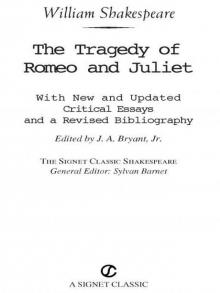 Romeo and Juliet
Romeo and Juliet As You Like It (Folger Shakespeare Library)
As You Like It (Folger Shakespeare Library)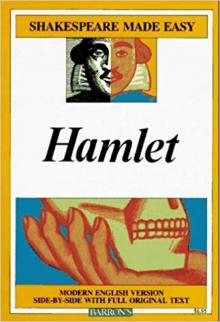 Hamlet
Hamlet Richard II (Folger Shakespeare Library)
Richard II (Folger Shakespeare Library)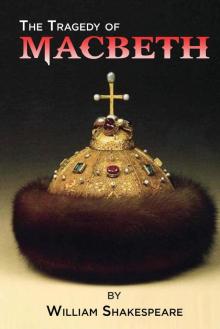 Macbeth
Macbeth Henry V
Henry V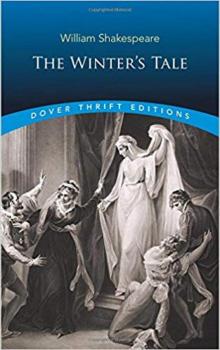 The Winter's Tale
The Winter's Tale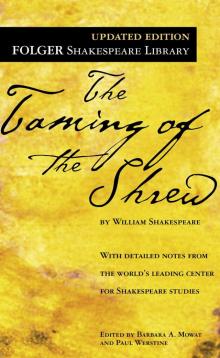 The Taming of the Shrew
The Taming of the Shrew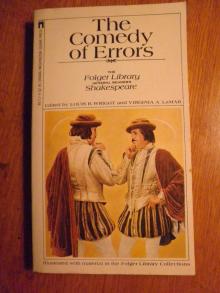 The Comedy of Errors
The Comedy of Errors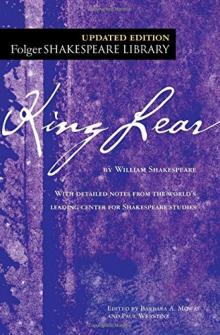 King Lear (Folger Shakespeare Library)
King Lear (Folger Shakespeare Library)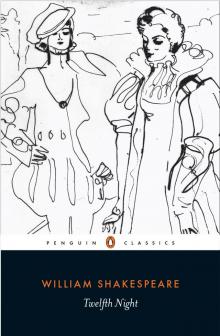 Twelfth Night
Twelfth Night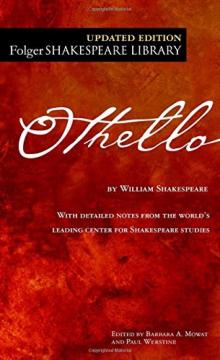 Othello
Othello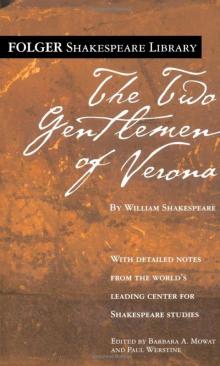 The Two Gentlemen of Verona
The Two Gentlemen of Verona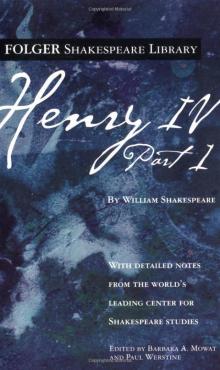 Henry IV, Part 1 (Folger Shakespeare Library)
Henry IV, Part 1 (Folger Shakespeare Library) King John/Henry VIII (Signet Classics)
King John/Henry VIII (Signet Classics)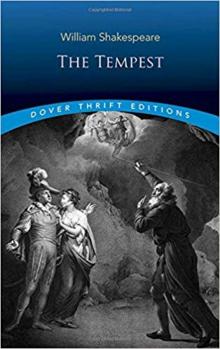 The Tempest
The Tempest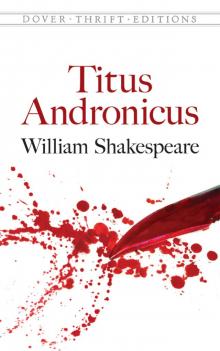 Titus Andronicus (Dover Publications)
Titus Andronicus (Dover Publications)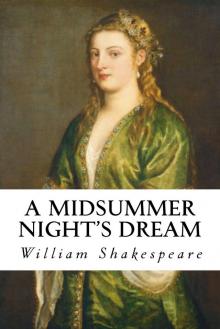 A Midsummer Night's Dream
A Midsummer Night's Dream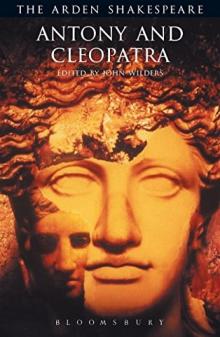 Antony and Cleopatra (Arden Shakespeare: Third Series)
Antony and Cleopatra (Arden Shakespeare: Third Series)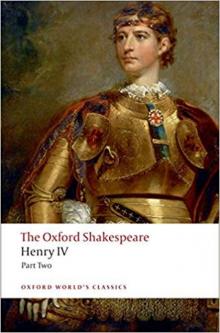 The Oxford Shakespeare: Henry IV, Part 2 (Oxford World's Classics)
The Oxford Shakespeare: Henry IV, Part 2 (Oxford World's Classics)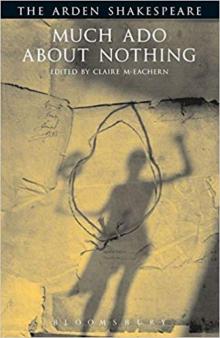 Much Ado About Nothing (Arden Shakespeare: Third Series)
Much Ado About Nothing (Arden Shakespeare: Third Series)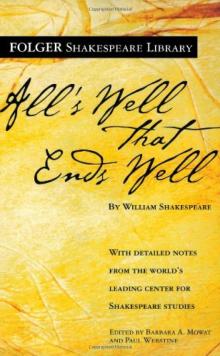 All's Well That Ends Well
All's Well That Ends Well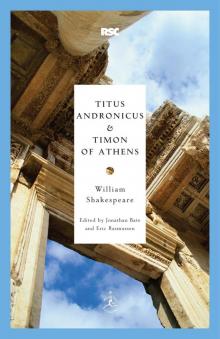 Titus Andronicus & Timon of Athens
Titus Andronicus & Timon of Athens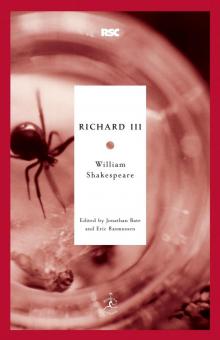 Richard III (Modern Library Classics)
Richard III (Modern Library Classics) Coriolanus
Coriolanus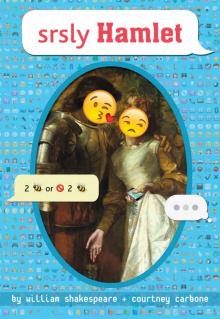 srsly Hamlet (OMG Shakespeare)
srsly Hamlet (OMG Shakespeare) The Merchant of Venice
The Merchant of Venice Richard III
Richard III Richard II
Richard II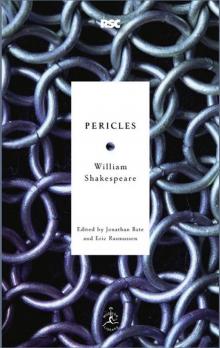 Pericles
Pericles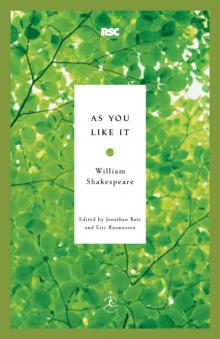 As You Like It
As You Like It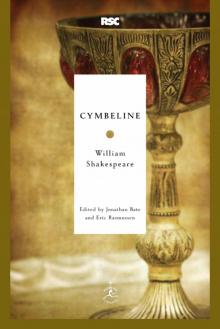 Cymbeline
Cymbeline Alls Wel that ends Well
Alls Wel that ends Well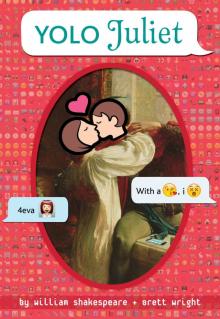 YOLO Juliet
YOLO Juliet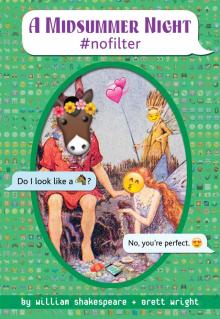 A Midsummer Night #nofilter
A Midsummer Night #nofilter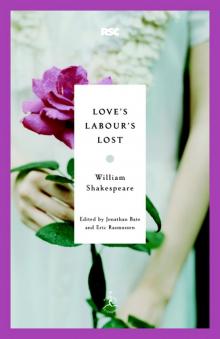 Love's Labour's Lost
Love's Labour's Lost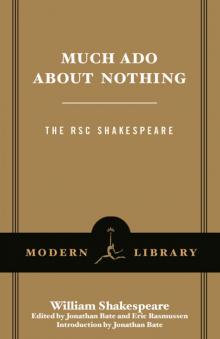 Much Ado About Nothing
Much Ado About Nothing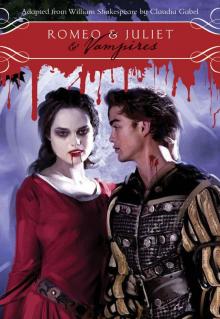 Romeo & Juliet & Vampires
Romeo & Juliet & Vampires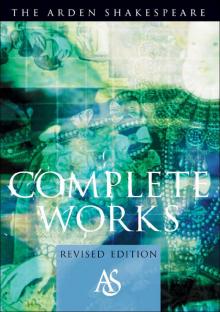 The Arden Shakespeare Complete Works
The Arden Shakespeare Complete Works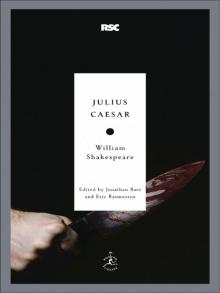 Julius Caesar
Julius Caesar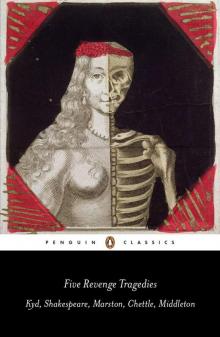 Five Revenge Tragedies: The Spanish Tragedy, Hamlet, Antonio's Revenge, The Tragedy of Hoffman, The Revenger's Tragedy (Penguin Classics)
Five Revenge Tragedies: The Spanish Tragedy, Hamlet, Antonio's Revenge, The Tragedy of Hoffman, The Revenger's Tragedy (Penguin Classics)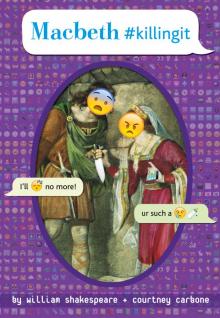 Macbeth #killingit
Macbeth #killingit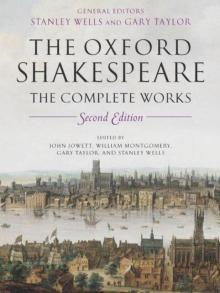 The Oxford Shakespeare: The Complete Works
The Oxford Shakespeare: The Complete Works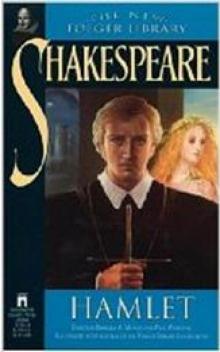 Hamlet, Prince of Denmark (Collins edition)
Hamlet, Prince of Denmark (Collins edition)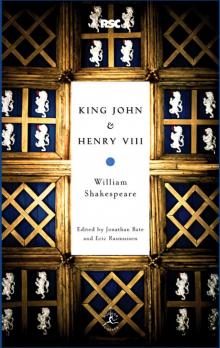 King John & Henry VIII
King John & Henry VIII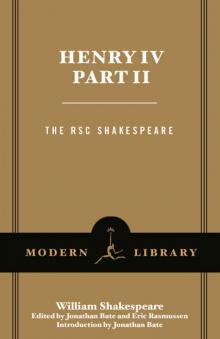 Henry IV, Part 2
Henry IV, Part 2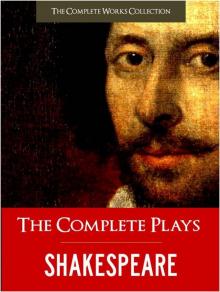 Complete Plays, The
Complete Plays, The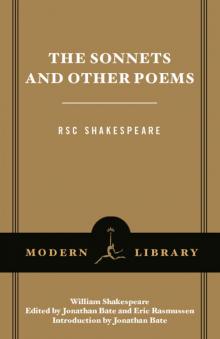 The Sonnets and Other Poems
The Sonnets and Other Poems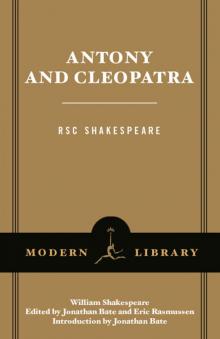 Antony and Cleopatra
Antony and Cleopatra Henry IV, Part 1
Henry IV, Part 1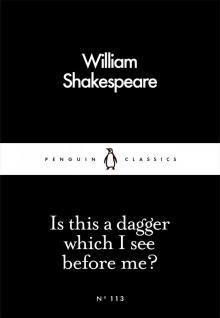 Is This a Dagger Which I See Before Me?
Is This a Dagger Which I See Before Me? The Complete Works of William Shakespeare In Plain and Simple English (Translated)
The Complete Works of William Shakespeare In Plain and Simple English (Translated)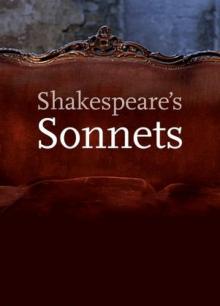 The Sonnets
The Sonnets